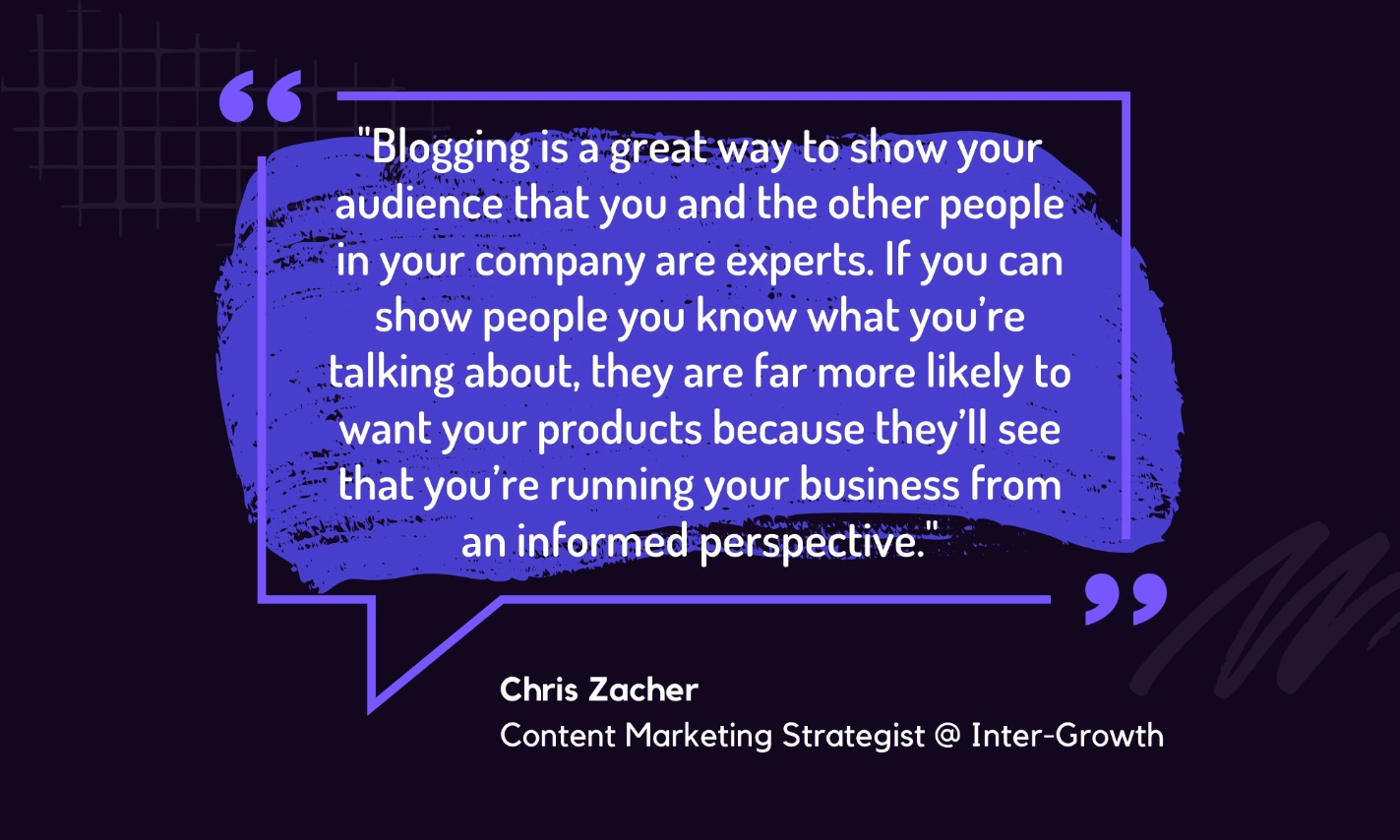
TL;DR
- Understand what goes into a demand generation campaign and how to set one up
- Find out 11 best practices for improving campaign ROI
- Discover the value of case studies, focused marketing channels, and content marketing investment for demand growth
{{new-hire-email-course}}
Creating an ROI-driving demand generation campaign takes an in-depth understanding of your target buyers and their struggles.
It also demands thorough planning, consistent execution, and ongoing optimization to refine your strategy. Despite this, many marketers make the mistake of using a spray and pray approach, targeting as many leads as possible with general, impersonal messaging in the hopes that a handful of them will respond.
Not only does this drive poor results. But it’s also discouraging. In this blog post, we walk you through 11 demand generation best practices to help you build a solid and successful demand generation campaign.
What is a demand generation campaign?
A demand generation campaign is a thoroughly planned, data-fueled strategy for driving awareness of and creating interest in your products or service.
The aim? To capture your target audience’s interest by educating them about your business.
For example, let’s look at the different demand generation strategies a DIY design tool could use. For starters, they could create a series of detailed blog posts about how customers can take design work into their own hands by using their tool.
Similarly, they could do live streams, teaching users how their tool works, demonstrating how to complete a specific task, or answering frequently asked questions.
And, another effective demand generation strategy they could take advantage of would be pairing up with influencers and asking them to create bite-sized videos promoting the tool.
However, a demand generation campaign is not the same as a lead generation campaign, even if some marketers use the terms interchangeably.
The main difference lies in the campaign’s purpose and which leads can access its content based on where they are in the funnel.
Where demand generation focuses on creating interest, lead generation centers around converting interested prospects into leads. To this end, demand generation provides ungated content, whereas, lead generation gates content and offers it in exchange for prospects’ contact information.
How do you create a successful demand generation campaign?
A winning demand generation campaign depends on the following principles:
- Have a clear understanding of who your target audience is. This will guide your decisions around which ideas to try and which channels to use to reach your ideal buyer. It’ll also help you create content that resonates with and engages your audience.
- Create a demand generation strategy and stick with it. Once you’ve put in the legwork to create a demand gen strategy, be consistent in executing it.
- Monitor results to optimize your demand generation campaign. Study how each tactic and content format is performing to determine whether it’s delivering results, needs improvement, or if you need to try something else.
11 demand generation best practices that improve your ROI
Now for the best practices that you should be following to drive excellent results from your demand generation campaign.

1. Talk to your ideal audience
The key to ROI-driving demand generation is customer research.
Talk directly with people who align with your target audience (if you’re just starting out) or with your loyal customers (if you already have paying customers).
Ask them about their pain points, how they consume content, and which online channels they use. Also, consider asking happy customers about which of your product’s features they love and how they use them.
Use the information to create product-led content showcasing real-life examples of how other businesses are using your product to solve their problems.
Conversing with your target audience will also help you decide which content types to create (think: blog posts, webinars, videos, or podcasts), and which marketing channels to use.
2. Conduct a competitor analysis

Find out what others in your industry are doing to increase their brand awareness and generate demand.
Take a look at:
- The content they’re creating
- How they’re making it unique
- Which marketing channels they’re using
- How they’re engaging their audience
Additionally, create a list of your competitors’ demand generation campaigns’ strengths and weaknesses. From there, identify opportunities you can double down on.
3. Create content for various stages of the funnel
Another important thing to keep in mind is that you need content that educates and engages your audience in each stage of the marketing funnel.
This means you can’t focus on one thing alone, such as producing product-led content. Instead, diversify your focus.
Create content for people who are:
- Problem aware and looking for free, helpful solutions
- Product aware, who you can educate about your product’s features
- Product aware and ready to buy who need a little bit of convincing
To meet the requirements of prospects in different funnel stages, create a variety of content types, such as:
- Educational pieces that answer readers’ questions and position you as an expert on the topic
- Product-led content that positions your product/service as the solution to your readers’ problems
- Product comparison content such as X tool vs Y tool to show on-the-fence prospects how your product is the one they need
4. Create case studies
Case studies share stories of successful businesses that have benefited from using your product or service.
Make sure you include them in your demand generation strategy as they offer essential social proof for convincing your audience to use your product. The good thing about case studies is you can answer different types of customer objections, as Joel Klettke, founder of Case Study Buddy, shares on LinkedIn:

However, the key isn’t in publishing case studies and curating them in a corner on your website. Instead, pull out results and customer quotes from those case studies and add them to your product-led content.
You could also create a live show where you invite your users to explain how they use your product.
5. Focus on 1-3 marketing channels at a time
A common demand generation mistake is to try to be everywhere your target audience is.
The problem with this?
You stretch yourself too thin, which reduces your chances of driving the best results from a given platform. Instead, start off with 1-3 social platforms. Or you can also consider throwing offline marketing strategies into the mix as they enhance your multichannel approach. Remember, the goal is to create content and engagement strategies for each one and be consistent with your efforts.
6. Invest in content marketing
88% of brands use content marketing to successfully drive brand awareness, with 80% using it for educating their audience. 72% have also used it for effective demand generation according to the same source — making a solid case for investing in content marketing.
In fact, Chris Zacher, a content marketing strategist at Inter-Growth, notes, “Blogging is a great way to show your audience that you and the other people in your company are experts. If you can show people you know what you’re talking about, they are far more likely to want your products because they’ll see that you’re running your business from an informed perspective.”

If you’ve already conducted thorough customer research, you’ll have a good idea of which marketing channels and content formats you should use for your content marketing plan.
With that decided, create a content strategy that highlights:
- Which broad content themes you’ll create content about
- How often will you publish new content
- How will you make your content unique
Then execute your strategy.
7. Repurpose the content you create into different formats
Content repurposing involves reusing content you publish in different formats.
For example, you can take the insights you share in a blog post to create a Twitter thread. Similarly, create a video from a blog post. Or turn a webinar or podcast episode into a blog post and vice versa.
In doing so, recycling content helps you squeeze the most value from the content you publish. It also ensures you’re sharing educational content in different formats to meet your audience’s different preferences for consuming content.
8. Create a content distribution plan
Creating and publishing helpful content on a regular basis is only part of the demand generation puzzle.
The other part?
Distributing content or sharing it on channels where your target audience is most likely to see it.
But here’s the thing: sharing a link to the content you create isn’t enough to engage your audience.
Instead, you’ll get more eyeballs on your content when you share a few valuable nuggets from it, then add a link to the full piece. Why? Because it only gives your audience a peek at what’s covered, encouraging them to click through to read more.
9. Find warmer paths into your target accounts

Finding warm paths into an account is an overlooked method for improving your demand generation campaign’s ROI.
Warm paths into an account ensure that you’re not just another new business but one your audience has interacted with before — either directly or indirectly. Here are some opportunities to find warmer paths into an account:
- Track job changes
One of the most effective sales trigger events is a customer job change. Suppose your contact was a past customer or prospect. Tracking job changes through UserGems and reaching out to people who knew your product and were (hopefully) happy customers helps open up sales opportunities for you.
- Open closed lost opportunities
A sales opportunity may not close for several reasons. Maybe the prospect didn’t have the budget at the time. Or someone might have blocked it. However, situations like these can quickly turn around, re-opening the opportunity for you. For instance, a new decision-maker may have been hired. And you can get their buy-in. Thankfully, UserGems helps track these new hires at your old target accounts so you can reach out to them to learn if they’re ready to buy.
- Keep in touch with your product influencers and champions
More companies now ensure that they can get employee buy-in before making a buying decision. So keep track of your champions and influencers within an account (and as they move to new companies), so they can influence buying decisions at their company.
10. Tap into influencer marketing
Influencer marketing is another effective demand generation idea to build social proof for your business. And it’s well worth the investment as you can earn up to $18 for every dollar you spend on influencer marketing.
Start by identifying influencers who your target audience trusts. Then, reach out to them with a collaboration plan — laying out your budget and creative ideas for the partnership.
11. Audit your demand generation campaign to improve it
“You need to test new channels fast and furiously and iterate every step of the way based on your customer, not your product or internal feelings,” points out Tara Pawlak, the Head of Marketing at GetAccept.

It’s why it’s important to periodically review your demand generation strategies to understand how they’re performing.
Simply create a spreadsheet sharing all your running demand generation campaigns. Then, add columns to record:
- The results each tactic is driving
- New insights you learned about your audience, and
- What route you’d like to take moving forward
Ready to improve the ROI of your demand generation campaign?
Remember, a demand generation campaign’s success depends on knowing your audience well and providing them with exceptional value.
This helps you answer the questions your audience has, make a case for your product or service, and position yourself as an authority they can trust.
Ultimately, providing the most value helps you drive brand awareness and generate demand for your product.
Most of all, keep in mind that successful demand generation thrives on strong relationship building with your audience. And it’s here that you’ll find UserGems helpful.
Our pipeline generation software helps you turn customer job movements and relationships into annual recurring revenue, by helping you:
- Automate repeat business by informing you when active or former champions change their jobs and provide you with their new contact information
- Power ABM execution by capturing every key unknown account in your target accounts
- Reduce customer acquisition costs by ensuring sales and marketing go after the same buyers







.svg)
